In late October 2025, U.S. President Donald Trump is scheduled to travel to Asia for meetings in Japan, Malaysia, and South Korea, where he will attend the Asia-Pacific Economic Cooperation (APEC) summit. Below, Brookings scholars assess what is at stake in Trump’s visit to the Asia-Pacific region.
Xi goes on offense ahead of summit
Chinese President Xi Jinping has shifted from defense to offense in the run-up to his anticipated summit with President Donald Trump. After spending much of the past year reacting to U.S. policy, Beijing on October 9 announced expansive export controls on the rare earth elements supply chains. Regardless of whether one views Beijing’s move as a reaction or a provocation, it was a calculated gambit by Xi to take the initiative in the bilateral relationship. The timing of the move reflected a crucial difference between Trump and Xi: whereas Trump approaches summits as an opportunity to make a deal, dealmaking is not an important part of Xi’s political persona. Xi’s modus operandi is much more akin to a jack-in-the-box—winding up patiently, sometimes over years, and then popping out at the propitious time. The result should be predictable, yet it is always surprising in the moment.
Xi likely judged he could strike now because the Trump administration has tried to mollify Beijing ahead of this summit by making major concessions on technology and Taiwan—two issues that had been the chief sources of friction in the bilateral relationship before this year. Beijing would have interpreted these accommodations not as gestures of goodwill, but as a sign that it had the upper hand. Viewed through this prism, Beijing would have seen the September expansion of U.S. export controls not just as a provocation, but as a pretext to roll out its own export controls, which almost certainly required months, not days, of planning.
The United States still has cards to play with China, but ever since the administration walked back its Liberation Day tariffs in the face of China’s retaliation, Beijing has concluded that Washington lacks the stomach to engage in an escalating trade war. A presidential meeting in Korea, accompanied by a renewed “ceasefire” in the U.S.-China trade war, will only reinforce Beijing’s assessment—and invite further unpleasant surprises from Beijing in the coming year.
A U.S.-China fentanyl deal may not resolve important law enforcement cooperation gaps
On October 19, Trump listed three demands on China before his meeting with Xi at the APEC 2025 summit: rare earths, fentanyl, and soybeans. The flow of fentanyl precursors from China to Mexican cartels was, of course, the original source of and justification for the first tranche of tariffs imposed on China by the Trump administration—10% in February 2025. China’s counter-tariffs and a subsequent tit-for-tat escalation brought the levies to a 145% high in April 2025. China’s boycott of U.S. soybeans is one of the counter-pressures China brought to bear on the United States. The soybean boycott has its own logic separate from fentanyl, but Beijing has also dangled its end in exchange for Washington reducing the fentanyl-linked tariffs.
Despite on-and-off fentanyl negotiations since April, and a rather positive outlook in August and early September that a U.S.-China fentanyl deal would be announced at APEC and reduce tariffs on Chinese goods by as much as 25%, the prospects for a deal stalled in late September and October.
One problem is that Trump’s demands that China prevent the flow of all fentanyl and fentanyl precursors to criminal groups are vague and unrealistic. Even with a massive police state, China cannot prevent all of the ubiquitous unscheduled fentanyl precursors that are found in the legal chemistry, pharmaceutical, and agriculture industries from leaking into the illicit trade. Second, because the Trump administration ignored the accomplishments of U.S.-China counternarcotics cooperation in 2024, China can adroitly double-count many of the deliverables provided to the Biden administration—such as the July 2025 scheduling of nitazine analogs (in the making since fall 2024)—in its bargaining with the Trump administration.
And if a fentanyl deal ends up announced at APEC 2025, it is unclear that it will address the thorniest but crucial issues, such as the lack of Chinese law enforcement action against the sellers of nonscheduled precursors to Mexican and other drug trafficking groups.
Trump-Xi meeting will be a data point, not an inflection point
There was optimism in the air in Washington in early October about President Trump’s upcoming meeting with Chinese President Xi Jinping. Trump and Xi had recently held a productive phone call. Bloomberg reported that China was considering a massive investment in the United States as part of a trade deal, and President Trump signaled to America’s beleaguered farmers that he would use his planned meeting with Xi to press for major Chinese purchases of U.S. soybeans.
Then in a matter of days, the ground shifted. America announced new export control rules on subsidiaries of designated Chinese companies and began collecting port fees for Chinese-owned or Chinese-built vessels. China responded with reciprocal port fees on U.S. vessels and announced new restrictions on exports of rare earths. A cycle of recriminations followed, with Trump declaring that the U.S. and China had entered a trade war.
As dramatic as recent events have been, it bears recalling that neither leader’s interests would be served by uncontrolled escalation. Rather, at a fundamental level, both leaders seek time and space to reduce their dependence on the other side for critical inputs for their own economies. This parallel pursuit of diversification and insulation against dependence on the other side is the mega-trend of the relationship. The upcoming Trump-Xi meeting, assuming it occurs, may or may not generate a temporizing trade deal. Regardless, the meeting will be a data point along an existing continuum rather than an inflection point in the relationship.
Asia’s interdependence is fraying under rivalry
As APEC leaders gather in Seoul for a summit under the banner of “Building a Sustainable Tomorrow,” with its three pillars of strengthening regional connectivity, bridging the digital divide, and promoting sustainable growth, the gulf between the summit’s optimistic rhetoric and geopolitical reality has rarely been wider.
Global attention is fixed on the anticipated meeting between Trump and Xi—the first since Trump’s return to office and taking place amid an entrenched trade war. Neither leader has proposed a constructive agenda for the Asia-Pacific. Both remain fixated on one-upping the other in a bruising cycle of tariffs, export bans, and retaliatory controls that have turned economic interdependence into a weapon of statecraft.
Middle powers, such as the host, South Korea, are caught in between. They are focused on negotiating trade deals with Washington while managing economic exposure to Beijing. Across the region, governments are hedging rather than leading in an increasingly transactional landscape.
What emerges is a troubling normalization of weaponized interdependence: the very connectivity once seen as stabilizing has become a source of vulnerability. APEC—launched over three decades ago on the faith that free and open trade, regional integration, and interdependence would generate shared prosperity—now finds that founding logic swiftly eroding.
The question is no longer how to deepen integration, but whether the region can withstand its unraveling. There is a widening vision deficit—if openness and interdependence no longer define the regional project, what will? And who will provide it?
Trump returns to Southeast Asia
Southeast Asia is not expecting significant U.S. tariff reductions, but the region aims to stabilize relations with the United States and create conditions for more constructive engagement—economic and otherwise. Thus far, the Philippines, despite a 19% tariff, has been the only country with which Washington has moved to deepen ties, committing half a billion dollars in military financing and support for defense modernization.
The Association of Southeast Asian Nations (ASEAN) has focused on securing Trump’s attendance at its summit and the Cambodia-Thailand ceasefire signing, both scheduled to take place in Kuala Lumpur, which Malaysia, as ASEAN chair, is hosting just before the APEC meetings in South Korea. Prime Minister Anwar Ibrahim announced Trump’s participation in July, but the White House has not officially confirmed his attendance. Reports suggest this hinges on ASEAN excluding Chinese representatives from the ceasefire ceremony, though Malaysia’s minister for investment, trade, and industry has publicly denied that Washington has set conditions.
The first—and last—time Trump attended ASEAN and related summits was in 2017. That Cambodia and Thailand reached a ceasefire after U.S. intervention—even if compliance has been uneven and even if it highlights ASEAN’s inability to bring the parties together—has allowed Trump to have a positive association with the region. This has arguably paved the way for a greater willingness to engage with ASEAN, which could in turn provide an opening for better U.S.-ASEAN ties.
A visit by the U.S. president will not be a game changer in Southeast Asia, but it could help place the relationship on a more positive course, for example, by giving momentum to working-level cooperation on mutually beneficial projects such as critical minerals and digital infrastructure. For Southeast Asia, what is at stake is preserving room to maneuver and strategic autonomy; for the United States, it is maintaining influence in the geographic heart of the Indo-Pacific by engaging broadly and reliably.
Trump should seek a new understanding with Xi on the Russia-Ukraine war
I believe the most important thing that Trump can do on his Asia trip is to seek an economic, trade, and investment deal with China that, in addition to the issues of broad tariffs and technology restrictions and rare earth minerals, also seeks a new understanding between Washington and Beijing on the Ukraine war.
China has been far too helpful to Russian President Vladimir Putin since 2022, providing lots of industrial equipment and components for finished goods that include weapons used on the Ukrainian battlefield. China also continues to buy Russian oil and gas.
To be fair, Beijing has accommodated core U.S. requests in regard to Russia to date—avoiding the sale of finished weapons and abiding (at least in part) by the oil price cap instituted during the Biden administration. But as it turns out, these provisions have not quite done the job. China’s ongoing interactions with Russia have been enough to keep Russian GDP from declining, and to keep Russian forces well-armed on the battlefield with Russian-produced weapons that have relied on Chinese manufacturing machinery and components.
We need to have a serious conversation with Beijing about placing temporary restraints and limits on future economic engagement with Moscow until Putin agrees to stop the fighting. Phasing out oil and gas imports from Russia should be on the list, as should tougher limits on Chinese exports of advanced industrial equipment to Russia. If Beijing refuses categorically, at that point, secondary sanctions and higher tariffs on China would be legitimate until the shooting stops or Beijing changes its policies.
Any grand bargain in the U.S.-China economic and political relationship should not ignore the ongoing war in Ukraine—the greatest threat to European security since World War II.
How regional partners will handicap the Trump-Xi meeting
When Trump meets with Xi on the sidelines of APEC, American allies and partners in the Indo-Pacific will be watching to learn who the United States stands with and what it stands for. The first nine months of the Trump administration’s Asia policy have been defined by no-holds-barred tariffs, pressure on defense partners to increase their spending, and the absence of a clear or coherent approach to the region. Allies increasingly understand that a regional strategy is not in the offing, so Trump’s approach to Xi is the closest thing they can hope to get.
Key developments they will be watching for include:
- How low the United States may be willing to drop tariffs on the People’s Republic of China (PRC) in the event of a trade deal, and how that rate compares to those that have been applied to close partners.
- Whether the United States extends the implicit moratorium on technology export controls and makes available to the PRC additional critical technologies like semiconductors.
- Whether Trump appears to rhetorically compromise on the United States’ long-standing positions on Taiwan, indicating that future cross-Strait concessions could be in the offing.
Each of these questions will help America’s closest partners divine whether U.S.-China competition as they have known it will continue, whether or not they will continue to have a privileged regional role, and how the Trump administration sees the defining geostrategic issue in Asia.
An unsettled Japan faces key diplomatic tests
The new Japanese leader will be thrust into high-level diplomacy immediately: attending regional summits—ASEAN in Malaysia and APEC in South Korea—and, in between, hosting Trump in Tokyo. The mettle of a novice premier will be tested by her ability to establish a productive relationship with Trump, reassure Asian partners that fraught Japanese domestic politics will not distract from promoting regional growth threatened by American tariffs and Chinese curbs on rare earths, and sustain the rapprochement with Seoul.
The addition of a Tokyo stop to Trump’s regional tour is a win for Japan. Even though the White House has yet to articulate its broader Asia strategy and oscillates from confrontation to negotiation with China, the presidential visit underscores the value it places on the alliance with Tokyo. Coming on the heels of a bilateral trade deal—which includes a hefty $550 billion investment fund—economic friction has been deflected, at least for now.
But even the most genial visit will not paper over the harsh realities that the return of a politically unstable Japan and transactional America augur. Ephemeral prime ministers would be ill-equipped to articulate long-term national strategy and deflect MAGA’s demands for economic rebalancing and defense burden-sharing. These profound uncertainties mean Japan must step up its game at APEC to cultivate regional partnerships and hedge against growing protectionism.
Bilateral meetings overshadow host South Korea’s APEC agenda
World leaders, including Trump and Xi, will soon convene in South Korea for APEC. As a middle power, South Korea relishes hosting high-profile international summits. However, as with other recent multilateral gatherings, such as the Group of Seven meeting in Canada, bilateral meetings like the upcoming Trump-Xi meeting are overshadowing the main event.
For sure, Trump’s and Xi’s expected attendance is boosting interest in APEC 2025. But other than the actual attendees, most people are unaware of this year’s core theme—“Building a Sustainable Tomorrow”—and its three related priorities: strengthening connectivity, fostering innovation, and sustaining inclusive growth and prosperity. As the host country, South Korea will also lead conversations on two challenges relevant to its own society: the artificial intelligence transition and demographic change.
Despite these important issues, most of the world unfortunately sees APEC as a staging ground for a Trump and Xi meeting. Trump himself will likely skip the main leaders’ summit, which would be a disappointment to the host. Other important bilateral meetings, including a meeting between Trump and South Korean President Lee Jae-myung, may reveal more details about a difficult trade deal involving $350 billion in South Korean investments. Speculation also persists about a possible (but highly unlikely) Trump meeting with North Korean leader Kim Jong Un near the inter-Korea border. The breakdown in global governance and the difficulty in achieving multilateral outcomes under the current geopolitical climate have contributed to the steady marginalization of summits in favor of using large gatherings like APEC to schedule smaller meetings on the sidelines.
The Brookings Institution is committed to quality, independence, and impact.
We are supported by a diverse array of funders. In line with our values and policies, each Brookings publication represents the sole views of its author(s).
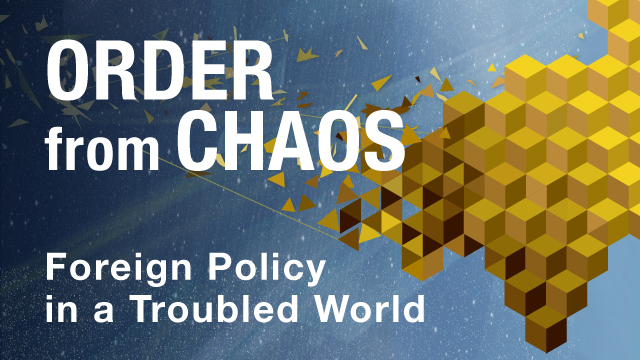









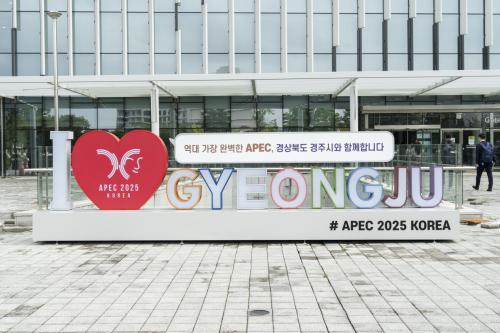
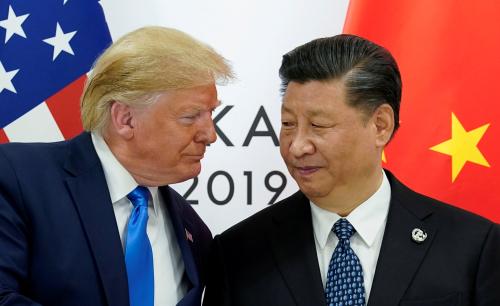
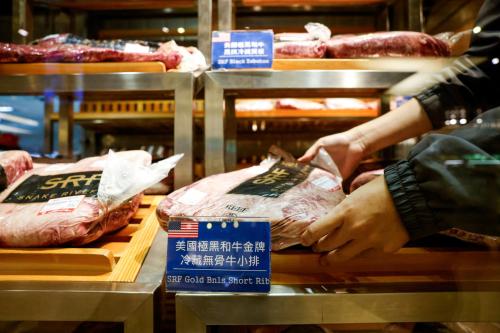


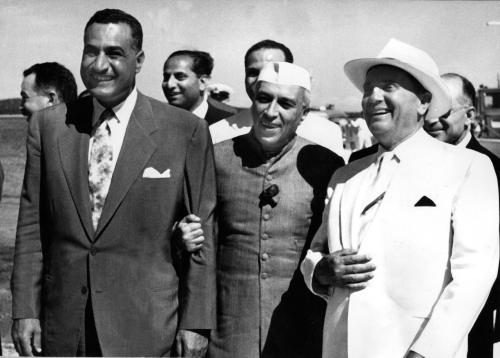
Commentary
What’s at stake during Trump’s visit to Asia?
Brookings experts weigh in
October 21, 2025